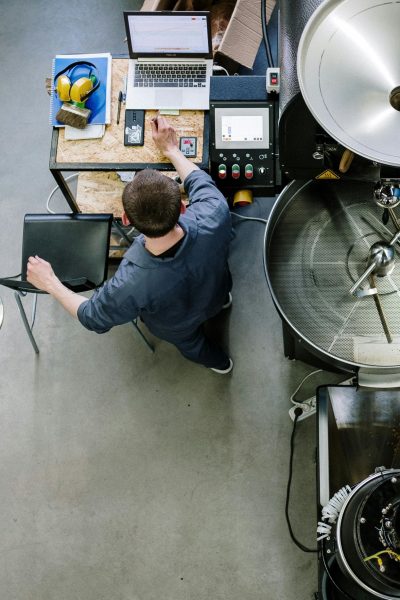
The journey to exceptional coffee flavor begins long before the roasting process starts. Green coffee beans arrive at your roastery with their flavor potential already determined by factors including origin, processing method, and storage conditions. Each bean variety carries unique characteristics that will respond differently to heat application. Ethiopian beans often display bright, floral notes, while Brazilian varieties tend toward nutty, chocolatey profiles. Understanding these inherent qualities allows roasters to develop profiles that highlight rather than mask the bean’s natural attributes.
Selecting Quality Green Coffee Sources
Origin Characteristics and Flavor Profiles
Different growing regions produce beans with distinct flavor signatures based on altitude, climate, and soil composition. High-altitude beans from regions like Guatemala or Kenya typically develop denser structures and more complex acidity levels. These beans require careful temperature management to unlock their potential without burning delicate flavor compounds. Meanwhile, lower-altitude beans from places like Hawaii or Brazil often feature fuller body characteristics that respond well to longer development times.
Processing Methods Impact on Roasting
The method used to process coffee cherries significantly affects how beans behave during roasting. Washed coffees generally produce cleaner, brighter flavors and require precise temperature control to maintain their clarity. Natural processed beans contain more sugars and require slower heating to prevent scorching while allowing proper caramelization. Honey processed coffees fall somewhere between these extremes, offering complexity that demands balanced roasting approaches.
Proper Green Bean Storage and Preparation
Before roasting begins, green coffee beans must be stored in optimal conditions to preserve their flavor potential. Ideal storage involves maintaining consistent temperature around 60-70°F with relative humidity between 50-60%. Beans should be kept away from direct sunlight and stored in breathable containers that prevent moisture accumulation while protecting from environmental contaminants. Regular inspection for defects, insect damage, or moisture changes ensures only the highest quality beans enter your roasting chamber.
Temperature Control and Heat Application
First Crack and Development Timing
Temperature management during the roasting process determines flavor development more than any other single factor. The period leading up to first crack requires gradual heat increase to allow moisture removal and initial chemical reactions. Most beans reach first crack between 385-395°F, marking the beginning of the development phase where roasters have the greatest influence over final flavor characteristics.
Managing Heat Transfer Methods
Roasting equipment uses three heat transfer methods: conduction, convection, and radiation. Drum roasters primarily use conduction and convection, requiring careful balance between direct heat from the drum surface and hot air circulation. Air roasters rely heavily on convection, allowing for more precise temperature control but requiring different timing considerations. Understanding your equipment’s heat transfer characteristics enables better prediction of how flavor compounds will develop throughout the roasting process.
Roast Levels and Timing Considerations
Different roast levels unlock various flavor components within green coffee beans, each requiring specific timing and temperature approaches:
- Light roasts (385-410°F) preserve origin characteristics and acidity while maintaining caffeine content, typically finished within 8-12 minutes of first crack
- Medium roasts (410-430°F) balance origin flavors with roasted characteristics, developing body while retaining brightness through 1-3 minutes past first crack
- Medium-dark roasts (430-445°F) emphasize roasted flavors over origin characteristics, continuing 3-5 minutes beyond first crack
- Dark roasts (445°F+) develop smoky, bold flavors while minimizing origin characteristics, extending well into second crack territory
Environmental Factors and Consistency
Ambient Conditions and Adjustments
Environmental factors including barometric pressure, humidity, and ambient temperature affect roasting outcomes significantly. High humidity days may require extended drying phases and adjusted heat application to achieve consistent results. Lower barometric pressure can cause beans to expand more readily, potentially shortening development times. Successful roasters maintain detailed logs correlating environmental conditions with roasting adjustments to ensure batch-to-batch consistency.
Batch Size Considerations
Roaster capacity utilization affects heat transfer efficiency and flavor development patterns. Smaller batches in large roasters may heat too quickly, preventing proper flavor development. Conversely, overloading smaller roasters can result in uneven heating and extended roasting times that may develop unwanted flavors. Most roasters perform optimally when loaded to 70-85% of their stated capacity.
Post-Roast Handling and Degassing
Proper handling immediately following the roasting process plays a crucial role in flavor preservation and development:
- Cool beans rapidly to room temperature within 3-4 minutes using appropriate cooling methods to halt chemical reactions and prevent over-roasting
- Store freshly roasted beans in containers that allow CO2 release while preventing oxygen exposure, as degassing continues for 24-48 hours post-roast
- Avoid immediate packaging in sealed containers, as trapped CO2 can create undesirable flavors and potentially damage packaging
- Monitor internal bean temperature during cooling to ensure complete heat removal before storage or packaging
Quality Control and Flavor Assessment
Regular cupping and quality assessment ensures roasting profiles achieve desired flavor outcomes consistently. Establish standardized cupping protocols using consistent water temperature, grind size, and brewing ratios. Document flavor notes, body characteristics, and any defects for each batch. This systematic approach allows for profile adjustments and helps identify when green coffee quality changes require roasting modifications.
For roasteries seeking premium green coffee beans that respond beautifully to careful roasting techniques, Intercontinental Coffee Trading offers expertly sourced beans from renowned growing regions worldwide. Contact our team today to discover how our quality green coffee selection can enhance your roasting program and deliver exceptional flavors to your customers.
